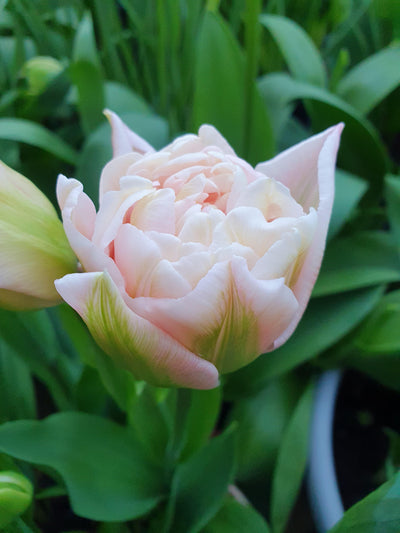Companion Planting: Growing Flowers and Vegetables Together
As the months progress, gardeners are beginning to delve into seed tins, grab their wellies and there is stray soil on all gardening gloves as seed sowing is truly beginning to kick off. Now is the perfect time to make sure you have a head start on the growing year by starting off sowing indoors or in a heated greenhouse and then moving to a cold frame after germination – plants sown now will flower much earlier than any late spring sown counterparts.

But the question which always arises is what to sow: perhaps you are a stalwart veg grower growing as much food as possible, or a cottage garden flower grower packing your ornamental borders to the brim with annuals. Many gardeners and non-gardeners alike envisage purely herbaceous borders and neat rows of edibles in the vegetable garden, but it doesn’t have to be that way, and perhaps the easiest way in which to make your planting more dynamic is companion planting with edibles and ornamentals mixed together in a planting scheme. So if you usually grow veg, try some flowers to add interest to your space, and if you are a flower grower consider another dimension with edibles. Also known as edible landscaping, using edible plants for ornamental value and ornamental plants for edible value not only adds interest to your garden, but helps wildlife and is a space saver.

Some vegetables can add ornamental value in conjunction with their food-bearing functions, such as the striking purple and green leaves of tree spinach, the delicate fronds of fennel and even the bolted heads of asparagus and cabbage and round cauliflower and broccoli heads. So why confine them to vegetable borders? Many would not only support but also enhance your main ornamental schemes, and the cloud-like effect of sprays of cosmos in amongst fennel is just one such example. Cardoons, artichokes, chard, kale and garlic: the list of vegetables pretty enough for the flower garden is endless – all of which would add form, texture and colour to your previously solely ornamental space, while making it anything but boring!

Similarly, flowers can take on edible qualities too, just as vegetables can embody flora in garden borders. Edible flowers are a vital component for versatility in any garden, and by having nasturtiums, calendula, salvias, violas and even dahlias, you are incorporating taste as well as tones into your displays. Nasturtium ‘Tip Top Alaska Salmon’ from The Rose Press Garden ticks all boxes and includes unusually beautiful pastel tones. In addition, these bright blooms will attract pollinators to your space, which can be invaluable when grown next to fruit trees or vegetables. Herbs can’t be forgotten, as many have bright, edible and flavoursome blooms, incredibly attractive to wildlife. Companion planting can also aid in warding off more unwelcome wildlife and diseases, for example, marigolds give off a distinctive smell which is hated by whitefly, incredibly useful for keeping them clear of your tomato crop.

While companion planting is extremely useful in functionality, its benefit to aesthetics also cannot be ignored. Growing beautiful annual and perennial ornamentals in amongst your veg crop will not only function as a vital source of cut flowers, but also in adding colour and a more relaxed and prairie-like feel to the vegetable patch. Poppy ‘Purple’ or ‘Swansdown’ will do this perfectly, as will Nigella ‘Persian Jewels,’ Stock ‘Cherry Blossom,’ or Cosmos ‘Daydream.’ Cornflower ‘Romantic Mixed’ won’t fail to create a romantic cottage garden look weaved between rows of lettuces or herbs. And the best part is that all these stunning florals are available as seed from The Rose Press Garden, meaning adding interest to your space has never been easier!





Leave a comment